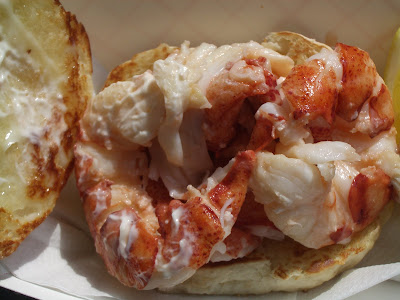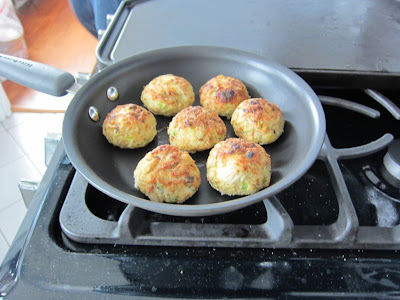
I've never tasted such flavorful and sizable whole bellied clams before. The batter was perfectly seasoned, and I didn't mind the Ken's tartar sauce. The only drawbacks are 1) the price...half a pint cost about $15 2) aggressive sea gulls that would steal your lunch. We literally lost 3 pieces of fried clams when a sea gull came over our heads and stole them while in flight. They weren't kidding with those sea gull warnings, so pay attention!
At first, I didn't think much of their lobster roll until I had one from another joint days later. At first bite, I was blown away by the lobster meat in the bun. It was so very tasty (because they cooked the lobster in sea water) and so very meaty. There was no celery or mayo in the filling, so it was pure lobster goodness. We ordered one roll with mayo and another with butter, and both were smeared onto the bun, not on the meat. I preferred the butter version better from the Clam Shack - it just went better with the lobster meat and the roll, which I will definitely talk about later.

Unlike lobster rolls I've had in the past, the lobster meat at the Clam Shack was not chopped up into smaller pieces. Instead, the tail meat was sliced in half. I felt like I was eating lobster in a bun. Pure. Lobster. Goodness.

Sadly, the bun dragged down my lobster roll experience. It's not the usual sweet potato bun that most lobster rolls use, which I think matches better with the saltiness of the lobster meat. On top of that, the texture of the roll didn't work for me. Add to it that although the inside of the bun was nicely toasted, it was not warm at all. However, it wasn't a bad lobster roll. In fact, I learned to appreciate Clam Shack's lobster roll package after having one from another joint. I just wished the lunch didn't put a hole in our wallet...Maine eats really add up!








































